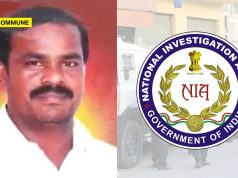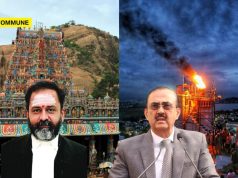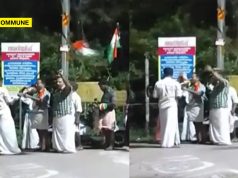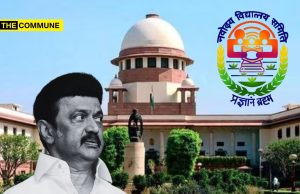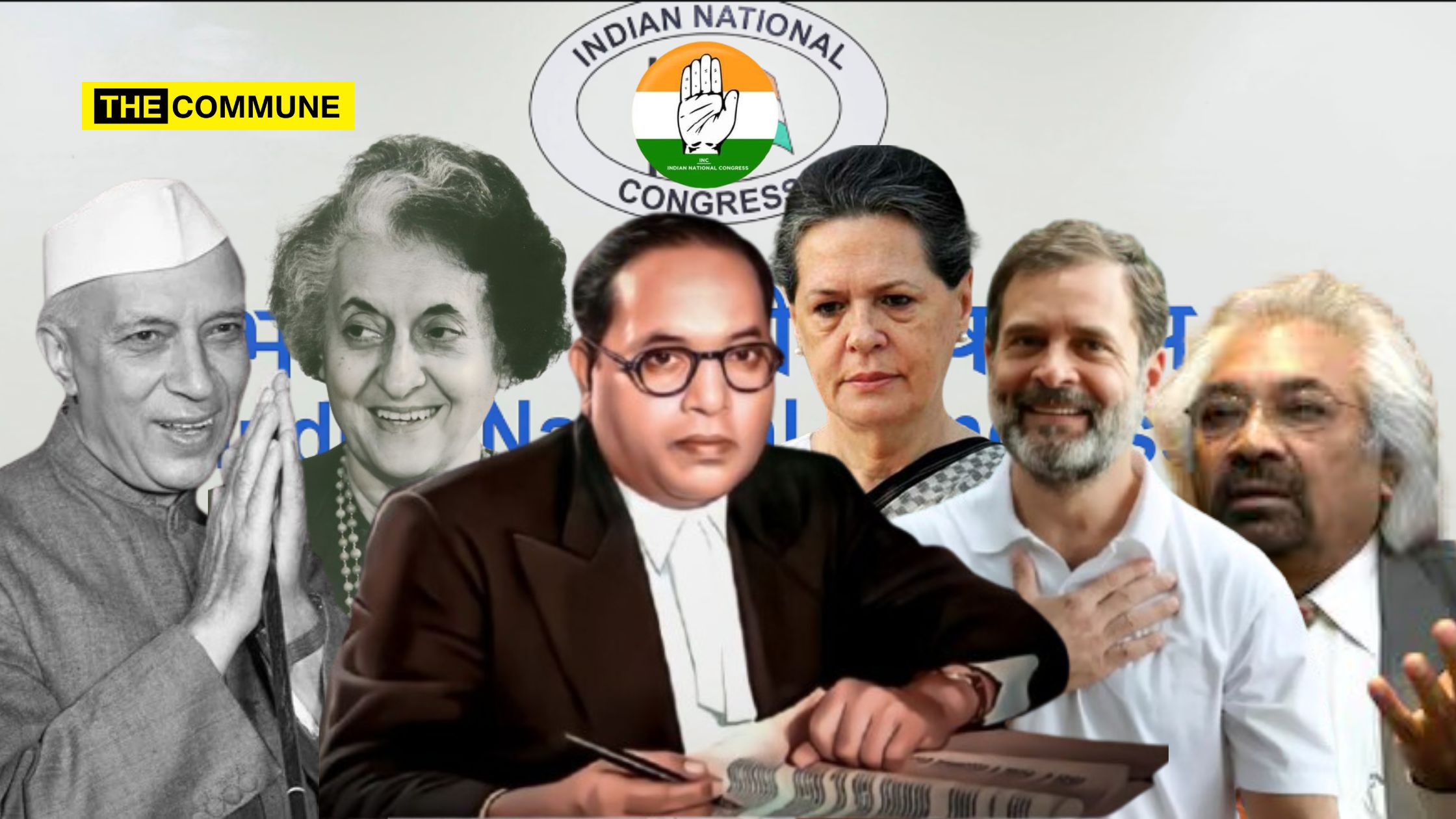
The entire Congress-Leftist-Dravidianist ecosystem has stirred up a controversy by spreading a false narrative by clipping a 12-second video of Home Minister Amit Shah, and attempting to convince the public that Amit Shah and the BJP are ‘anti-Ambedkar,’ ‘anti-Constitution,’ or ‘anti-Dalit.’ However, this narrative crumbled once the full context of Shah’s statement was revealed, debunking the claims. Rather than disrespecting Ambedkar, Shah’s comments exposed the propaganda machine of Congress and its allies, showing that they have disrespected Ambedkar and his principles both in the past and present.
In this context, it’s important to consider how Congress and its leaders have consistently undermined Babasaheb Ambedkar, primarily to preserve their dynastic politics. Ambedkar’s knowledge and influence were seen as a threat to the Nehru-Gandhi family’s control, prompting Congress to sideline him tactically after the first parliamentary elections. Much like how they adopted the surname “Gandhi” instead of “Nehru,” Congress and its leaders have used Ambedkar’s name as a mere political tool for survival and vote bank politics, without truly upholding or following his principles.
Nehru Worked To Defeat Ambedkar In Elections
The Congress party has long exhibited an anti-Ambedkar sentiment, dating back to the era of Jawaharlal Nehru. Nehru’s Congress treated Dr. B.R. Ambedkar with contempt, actively working to ensure his defeat in the 1952 parliamentary elections in North Bombay and the 1954 by-election in Bhandara. Infact, Nehru made defeating Ambedkar as a matter of his prestige.
The 1952 Lok Sabha elections in the North Bombay reserved constituency marked a calculated effort to sideline Dr. Ambedkar, one of India’s greatest intellectuals and visionaries. The Congress, treating the election as a battle of prestige, ensured a meticulously orchestrated campaign under the supervision of Prime Minister Nehru, with active involvement from S.K. Patil and Communist leader Shripad A. Dange. Their objective was clear: defeat Dr. Ambedkar at any cost. To achieve this, they rallied behind an unknown candidate, Narayanrao Kajrolkar, who ultimately won by a slim margin of 14,374 votes (Kajrolkar: 137,950; Ambedkar: 123,576).
This defeat wasn’t just political—it was symbolic. It demonstrated the extent to which the Congress and its allies would go to suppress towering figures like Dr. Ambedkar, whose contributions to shaping modern India remain unmatched. The election revealed an unwillingness to accommodate independent thinkers of his caliber, prioritizing political dominance over merit and vision. In doing so, the Nehruvian establishment attempted to erase the legacy of one of the nation’s most critical and transformative leaders.
Denied A Portrait In Central Hall Of Parliament & Bharat Ratna
It was only in 1990, under the National Front government supported by the BJP, that Dr. Ambedkar’s portrait was finally placed in the Central Hall of Parliament. For decades, the Congress also denied him the Bharat Ratna, which was conferred on him only by the National Front government in 1990.
Shaming Ambedkar In School Textbooks
In 2012, a controversial cartoon of Dr. B.R. Ambedkar featured in the NCERT political science textbook for Class XI sparked outrage in both houses of Parliament. The cartoon, which was deemed derogatory, led to the government issuing an apology and ordering its removal from the textbook. Originally published in 1949, the cartoon had been included continuously, seemingly to mock Ambedkar. It depicted Ambedkar riding a snail labeled “Constitution,” which was moving slowly, while Jawaharlal Nehru was shown wielding a whip. The cartoon was intended to reflect the two years it took to draft the Constitution, but it ignited widespread controversy. In response to the backlash, the Congress government apologized and ensured the sketch was removed from NCERT textbooks.
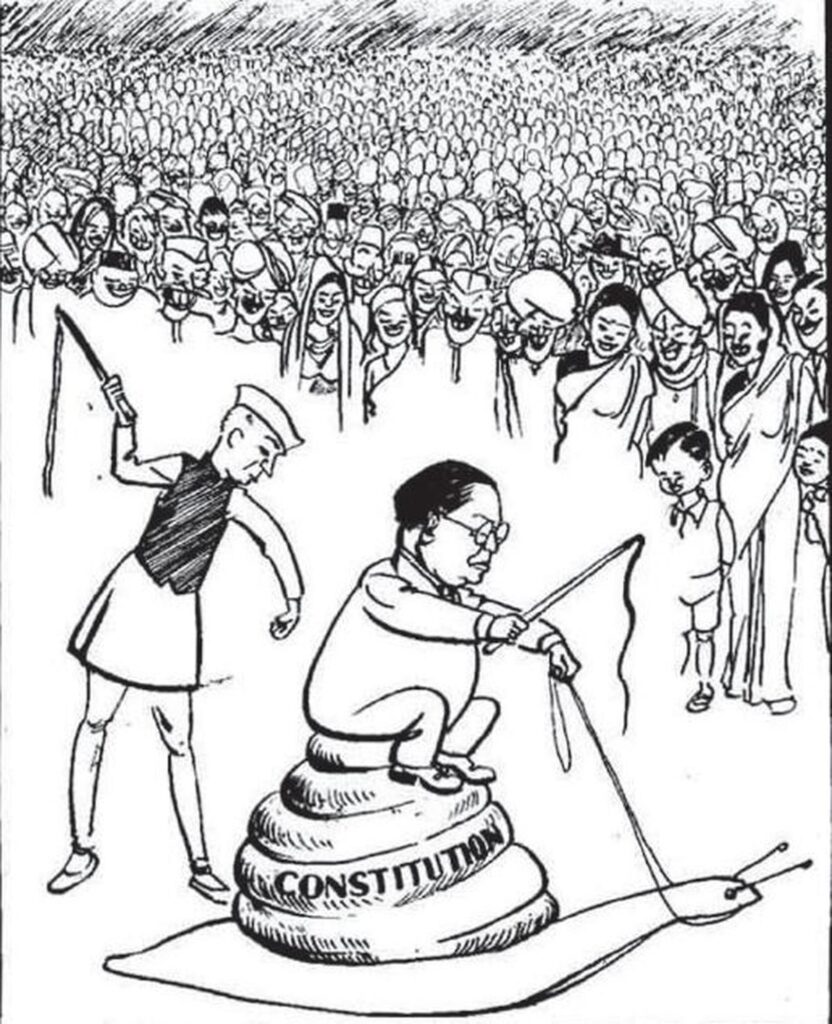
Rahul Gandhi’s Mentor Sam Pitroda Insulted Ambedkar
Recently, Rahul Gandhi’s mentor, Sam Pitroda, insulted Dr. Ambedkar by endorsing a tweet/article that outrageously claimed that the greatest falsification of modern history was the idea that Ambedkar was the father of the Indian Constitution.
This is absolutely shocking! Rahul Gandhi’s close aide and mentor Sam Pitroda insults Baba Saheb Ambedkar, undermines his contribution to framing India’s Constitution, and like all things Congress, gives credit to Nehru. Congress’s hate for Dalits and Dr Ambedkar, an erudite man,… https://t.co/UU9MAzYfnH pic.twitter.com/B2ZG8bQNsh
— Amit Malviya (@amitmalviya) January 27, 2024
Rahul Gandhi Called For Cancelling Reservation
The Congress party’s approach to Ambedkar’s legacy is a notable aspect of its political strategy. There are several factors contributing to the shortcomings of Rahul Gandhi’s social justice efforts. While the party publicly supports a caste census and calls for greater representation for political gain, its actual practices tell a different story; Congress-led states have not demonstrated any commitment to these principles. Recently, during his visit to the USA, Rahul Gandhi suggested moving away from reservations in India, a remark that sparked considerable backlash, as it contradicts Ambedkar’s vision for upliftment and the protections enshrined in the Constitution.
Rahul Gandhi Was Seated In A Chari While Ambedkar’s Photo Was On The Ground
Recently, Rahul Gandhi faced heavy criticism on social media after a photo surfaced showing him posing with Dr. B.R. Ambedkar’s portrait placed on the floor during a meeting with representatives of the Valmiki community at his mother’s residence in Janpath. Netizens accused him of disrespecting Ambedkar, sparking widespread backlash.
The criticism directed at Rahul Gandhi arises in the context of his recent visit surrounding Valmiki Jayanti on 17 October 2024. On this occasion, he visited the Valmiki Temple on Mandir Marg to offer prayers and later met with the representatives of the Valmiki community at his mother Sonia Gandhi’s residence. During a meeting with delegations, members brought souvenirs and gifts to Rahul Gandhi and took photos with him. These images were shared by Gandhi and the Congress on their respective social media platforms. However, one picture drew significant backlash: it showed a photo of Dr B.R. Ambedkar carelessly placed on the ground among the attendees. This caused considerable outrage, as many felt it disrespected Ambedkar’s legacy.
Netizens criticized Gandhi, pointing out the contradiction between his praise for Ambedkar and the perceived disrespect in the photo. The incident went viral, with many expressing their disappointment over what they saw as hypocrisy while honoring Maharishi Valmiki, a respected figure among Dalit communities and the author of the Ramayana, they felt it was wrong to disregard Ambedkar in the same setting.
नेता विपक्ष श्री @RahulGandhi ने आज वाल्मीकि समाज के प्रतिनिधिमंडल से मुलाकात की।
📍 10 जनपथ, नई दिल्ली pic.twitter.com/EaBxwjgdVf
— Congress (@INCIndia) October 17, 2024
In stark contrast, Prime Minister Narendra Modi paid a heartfelt tribute to Ambedkar during his 125th birth anniversary, marking the first-ever celebration of Constitution Day. He introduced the term “Panchteerth,” committing to develop five significant locations related to Ambedkar’s life into pilgrimage sites and declared Samvidhan Diwas. In 2018, Modi granted constitutional status to the BC Commission, supported the election of India’s first tribal woman president, and led the passage of a constitutional amendment to ensure women’s reservations.
Subscribe to our channels on Telegram, WhatsApp, and Instagram and get the best stories of the day delivered to you personally.

